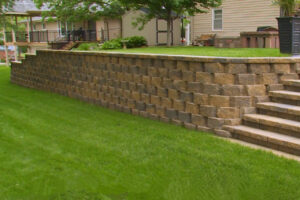I am renovating an old kitchen to improve function and add value. This may include replacing cabinets and countertops, adding lighting or a backsplash and installing new appliances.
A mid-size remodel usually begins with a demo stage, removing the cabinet, countertop and flooring to expose the wall and ceiling framing. This opens the possibility of moving walls, borrowing space from another area or even adding an addition. Contact Kitchen Remodelers Richmond VA now!

- Experience
The kitchen is the heart of your home, so you want to make sure it looks as good as possible. Remodelers know the latest trends and design styles, allowing them to offer homeowners a wide range of options that suit any taste and budget.
When choosing a kitchen remodeler, ask about their experience and expertise in renovations. You can also find out their process, work ethic, and warranty information to see if they’re the right fit for your project.
Kitchen renovations are a huge undertaking. It takes time, patience and construction knowledge to complete the job correctly. Kitchen remodelers have the experience to handle all aspects of your kitchen renovation and ensure that the job is done on time and within budget.
Remodelers are familiar with all types of architectural styles and are aware of the piping and wiring that may be in your walls. This experience can help you avoid common mistakes that often occur during kitchen renovations, such as tearing out the wrong wall or accidentally hitting an underground pipe.
A kitchen remodel is the perfect opportunity to add more storage space. Remodelers can increase the amount of cabinets and shelves, or they can install hidden storage solutions like sliding drawers and pull-out pantry organizers.
Adding more storage space can be beneficial for any homeowner, especially if your current kitchen is cramped. It can also make cooking and cleaning much more enjoyable, ensuring that your family has enough room to move around without bumping into each other or tripping over furniture. In addition, a new storage solution can improve your home’s organization and reduce clutter, making it a more pleasant place to live.
- Design
One of the most important elements of a kitchen remodel is the design. It’s essential to consider not only what you want to accomplish, but how it will impact the rest of your home and the resale value. For example, adding a walk-in wine cellar might appeal to you, but it may only draw interest from a limited buyer pool down the road. Also, over-customizing a kitchen can limit future homeowners’ options in selecting items that suit their needs.
Kitchen remodeling is a great way to boost your home’s overall functionality and add value. A well-executed kitchen renovation can add up to a 70% return on investment when it comes time to sell.
A cosmetic kitchen upgrade involves replacing or refacing cabinets, appliances and fixtures and may or may not involve expanding the physical space. A major kitchen renovation is typically more expansive, changing the floor plan, enlarging the room and possibly relocating pipes or re-routing electrical wiring. A full kitchen remodel is likely to require the involvement of a general contractor, interior designer and perhaps an engineer.
If you’re a budget-conscious homeowner, consider off-loading the planning and design duties of a kitchen remodel to an owner/operator contractor with a solid track record. This will save you the cost of a general contractor’s overhead and profit margin. Then, you can hire and supervise subcontractors yourself to do the hands-on work. This approach can save up to 40% of the total cost of hiring a GC. Then, you can invest these cost savings back into your project to boost its ROI. It’s also worth noting that a well-planned kitchen layout can make it easier and more enjoyable to cook in your new kitchen.
- Expertise
For homeowners seeking to turn their kitchen into a work of art, it’s crucial to have the right professionals on the job. The best kitchen remodelers have years of expertise in the field and can overcome design challenges with ease. They are also able to coordinate well with other tradespeople, such as plumbers and electricians.
Kitchen remodelers have the knowledge and skills necessary to create a unique kitchen that meets your goals while keeping within your budget. This includes knowing how to source high-quality materials at a reasonable cost, and how to select aesthetically pleasing finishes that will add value to your home. In addition to their technical know-how, kitchen remodeling specialists can provide you with valuable insights into the latest trends and developments in the industry.
While some homeowners choose to DIY their kitchen renovations to save money, it’s important to remember that this isn’t a project for beginners. Kitchens are complicated spaces and it’s easy to make mistakes that could have serious consequences. For example, improperly handling plumbing or electrical work can lead to costly damage and unsafe conditions. A professional kitchen remodeler will ensure that the job is done correctly and safely, saving you time, money and stress in the long run.
When searching for a kitchen remodeler, ask your personal network for referrals and check with local organizations like the NKBA or NARI for members in your area. It’s also a good idea to ask potential contractors for their license number and insurance certificate, and follow up with your state’s licensing department to confirm that their credentials are in good standing.
- Value
Remodeling your kitchen can add value to your home. According to Houzz, a majority of remodels do increase resale value, though ROI can vary depending on the local market and what is done in the kitchen.
A kitchen renovation, especially a major one, involves dropping walls, moving plumbing and gas lines, and rewiring electrical. These projects are complex and can be dangerous if not done properly. Unless you are an experienced DIYer, hiring pros is a safer option. They know what they are doing and can complete projects quickly. There are countless stories of homeowners who get in over their heads when they take on major projects like this themselves.
When you hire a general contractor, they can get better rates for materials and supplies than you could on your own. They can also help you determine what is within and beyond your budget. They can also help you avoid costly mistakes that might be impossible to recover from. For example, ornate crown moldings and pilasters can eat up budgets quickly, while more simple woodwork will stand the test of time.
Lastly, a good remodeler will have an eye for what other homebuyers are looking for. They can steer you away from upgrades that may not appeal to the broadest range of buyers, such as high-end appliances or fancy countertops.
If you are considering remodeling your kitchen, it is important to think carefully about what your motivations are and what will be best for your family. It is also helpful to talk to a real estate agent, who can give you advice about the specifics of your local market. A good remodeler will make sure your project is completed in a way that adds value to your home and makes it enjoyable for years to come.
- Time
A kitchen remodel can be time consuming, but the results are worth it. An upgraded kitchen not only looks great, but it can increase the resale value of your home. The key to getting the most out of your remodel is to work with an experienced kitchen remodeling company. This ensures that the job is done correctly and in a timely manner.
Depending on the scope of your project, kitchen remodels can take weeks or even months to complete. Cosmetic changes like refinishing cabinets or adding new flooring may be able to be completed in less time than a major renovation that involves demolishing and starting from scratch.
The first step in a kitchen remodel is to determine your goals for the space. Will a simple refresh address your needs or will you need to open a wall, change the location of a sink or stove, or relocate utility lines? Any structural or utility-line changes will require more in-depth remodels that involve removing walls and ceiling drywall to expose the framing, and then rebuilding them to your specifications.
Once your design plans are finalized, the construction and installation process begins. This is the bulk of your remodel’s duration and usually accounts for 70-80% of the total project timeline.
During this phase, the kitchen is framed, plumbing and electrical are installed and a subcontractor finishes the rough-in. Cabinets and countertops are then installed, and appliances, lighting and backsplash are added. Final touches such as cabinet hardware, crown molding and paint touch-ups are also applied. Once the construction is finished, a building inspector will visit to verify that all requirements are met and that you’re ready to enjoy your newly-remodeled kitchen.

